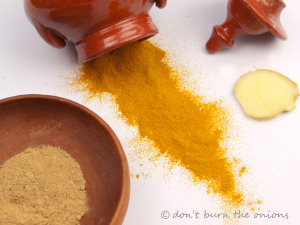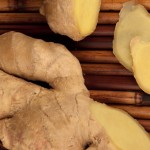
Home spun remedies, based on local ingredients and handed down the generations, like chicken soup to combat flu, are often dismissed as placebos. We live in an age dominated by over-reliance on prescription medicines and pill popping, even for minor ailments like indigestion. Complementary remedies play only a minor role in the UK, compared with other parts of the world. Yet prescription medicines can also pose health risks.
When I was diagnosed with osteoarthritis in January this year, I felt devastated as I had always assumed that osteoarthritis only affected the elderly; but it can strike at any age. (Click here for osteoarthritis definition) The anti-inflammatory drugs I was prescribed to ease the severe pain made me feel like a zombie, so the doctor recommended Ibuprofen as a better long-term option. But I rebelled against the notion of medicines which were not going to cure my condition and made the decision to do look for alternatives.
I found to my joy that diet can help alleviate symptoms and that the Mediterranean Diet especially is recommended by the NHS and many other respected institutions such as Arthritis Research. This was great news to me as this is my natural diet, although I now live in the UK and do some very British things like drink tea and butter my bread! I therefore upped the ingredients in my diet which have been proven to reduce inflammation, reduced the “bad foods” like saturated fats and sugar, took up yoga again (after a three-year break) and did the exercises recommended by my physiotherapist, to help build up the strength in my bones and muscles. I have to admit that the exercises especially were no fun. Every time I stretched into the various poses my hips and arms seemed to be screaming “Noooo!” But as the weeks went on and I kept up my daily routine, I noticed the pain diminishing and my joints feeling less “rusty.”
Then it was reported in the media how an Oxford University research team had identified health risks for arthritis sufferers on ibuprofen and diclofenac. (View report here) This news made me even more determined to stick to my drug free plan!
My body has responded so well to my diet and exercise regimen that I have decided to share my experiences in the hope that it may help others looking for safe and natural ways of helping themselves. These are the beneficial foods I have made sure form a major part of my diet:
 Garlic: now known to have anti-inflammatory properties, it’s seen to help improve circulation and blood flow, thereby making it an effective arthritis aid. Although I eat garlic regularly, I’ve increased my daily consumption as it’s been proved that for maximum health benefits you need to eat at least 5 cloves of garlic a day. Although this may sound like a lot, there are lots of simple recipes which include garlic and don’t involve cooking. You can boost garlic’s beneficial effects by chopping it and leaving it for around fifteen minutes before eating.
Garlic: now known to have anti-inflammatory properties, it’s seen to help improve circulation and blood flow, thereby making it an effective arthritis aid. Although I eat garlic regularly, I’ve increased my daily consumption as it’s been proved that for maximum health benefits you need to eat at least 5 cloves of garlic a day. Although this may sound like a lot, there are lots of simple recipes which include garlic and don’t involve cooking. You can boost garlic’s beneficial effects by chopping it and leaving it for around fifteen minutes before eating.
 Ginger: another natural yet effective weapon against arthritis; it has been scientifically proven to relieve pain as well as inflammation. I cut down on drinking coffee replacing it with ginger infusions (including the rind). Ginger also helps to combat stress which is known to be a contributing factor for arthritis and many other ailments.
Ginger: another natural yet effective weapon against arthritis; it has been scientifically proven to relieve pain as well as inflammation. I cut down on drinking coffee replacing it with ginger infusions (including the rind). Ginger also helps to combat stress which is known to be a contributing factor for arthritis and many other ailments.
Turmeric: I once heard an Indian chef say that in India it’s rubbed into cuts to prevent them getting infected, so knew this spice had long been prized for its antiseptic properties. Scientists have now found it to be also effective against inflammation. I found a tea made from Ginger and Turmeric which turned out to be delicious (not at all like drinking a curry!) To make this tea more effective I add a slice of fresh ginger to the brew which also enhances the taste so it doesn’t feel as if I’m forcing down some vile tasting medicine!
Olive oil: In a recent post I wrote about the anti-inflammatory effects of olive oil (see Strange but True section) Olive oil has omega-6 fats which have been found to block the body’s response to inflammation in many conditions including arthritis.
Omega 3 oils: Also highly regarded for its anti-inflammatory properties, I increased my weekly intake of oily fish such as mackerel and salmon. As I love fish, this did not feel at all like a sacrifice!
Lots of fresh fruit,vegetables, grains, nuts and seeds: The Mediterranean has a wonderful way of converting simple everyday plant foods into delicious dishes and snacks. The Recipes section contains some of the food which I have rustled up this year in my efforts to integrate as many “healing” foods as possible into my daily diet.
Six months on, instead of worrying about whether I can live without my daily dose of ibuprofen, my condition has improved hugely. The good thing about employing dietary and lifestyle changes for health reasons is that it has kept me feeling in control of my health. It has also been enjoyable eating delicious food as part of my strategy! For a perfect example of a favourite snack of mine, check out Pan a la catalana, which is a simple yet heavenly combination of tomatoes, garlic and olive oil on bread!
Useful resources:
Helpful patient- focussed information on the Mediterranean diet written by a team of doctors in the UK is available from www.patient.co.uk on http://www.patient.co.uk/health/health-benefits-of-the-mediterranean-diet
The Harvard School of Public Health has over 140 articles on the Mediterranean Diet. Click on the following link for latest news and earlier articles http://www.hsph.harvard.edu/search/?q=mediterranean+diet.
© (Suzette McDaniel Don’t Burn The Onions) Unauthorized use and /or duplication of this material without express written consent from this blog’s author/and or owner is strictly prohibited.

You must be logged in to post a comment.